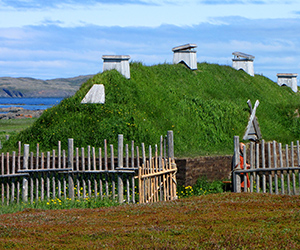CANADA HISTORY
Pearson

The Liberal Party of Canada faced a period of turmoil and uncertainty following their defeat in the 1957 federal election and the resignation of their long-serving leader, Louis St. Laurent. This defeat ended 22 years of Liberal dominance in Canadian politics, and the party was left to rebuild from its weakened position. In this challenging environment, the party turned to Lester Bowles Pearson, a diplomat and Nobel Peace Prize laureate, to lead them through this difficult period and reinvigorate their standing on the national stage.
The Rise of Pearson: A Diplomatic Star in Politics
Lester B. Pearson had a distinguished background in foreign affairs, having served as the Canadian ambassador to the United States, as well as chair of the General Assembly of the United Nations. Pearson was also celebrated for his role in diffusing the 1956 Suez Crisis, which earned him the Nobel Peace Prize. His international experience and reputation for diplomacy made him an attractive candidate for the leadership of the Liberal Party. In 1958, Pearson was chosen to lead the Liberals, defeating his nearest rival, Paul Martin Sr., in the leadership contest.
Despite his remarkable accomplishments on the world stage, Pearson initially struggled to adapt to the intense and combative nature of Canadian parliamentary politics. He called for Prime Minister John Diefenbaker to either allow the Liberals to take over the government or call a general election. This backfired, as Diefenbaker, whose Progressive Conservatives had only held a minority government, called an election and won a massive victory, reducing the Liberals to just 49 seats in the House of Commons. Pearson, still adjusting to the rough-and-tumble of Canadian politics, had been humbled.
Rebuilding the Liberal Party
Following this electoral disaster, Pearson set about rebuilding the Liberal Party from the ground up. He learned quickly from his early missteps, becoming more attuned to the realities of Canadian politics and public opinion. He worked to rejuvenate party morale and bring fresh energy to the Liberal ranks. He successfully recruited new talent, including many young political figures who would become key players in the party's future. This included the likes of Pierre Trudeau, Jean Marchand, and Gérard Pelletier, who would go on to shape the direction of the party in the years to come.
As Pearson rebuilt the Liberal Party, the Progressive Conservative government under Diefenbaker began to experience internal discord and declining popularity. By the 1962 election, the Liberals nearly doubled their seat count, winning 100 seats, while the Conservatives were reduced to 118 seats, a far cry from their previous dominance. The Social Credit Party, led by Réal Caouette, further complicated the political landscape by winning 26 seats in Quebec, preventing the Liberals from gaining a commanding foothold in the province.
Diefenbaker’s Decline and Pearson’s Opportunity
By 1963, the internal divisions within the Progressive Conservative Party reached a breaking point. Diefenbaker’s handling of key issues, particularly the question of allowing nuclear warheads on Canadian BOMARC missiles, led to the resignation of his Minister of Defence, further weakening his position. Sensing an opportunity, Pearson and the opposition parties called for a vote of no confidence, which the Conservatives lost. This forced Diefenbaker to call another election.
The 1963 election saw the Liberals emerge victorious, although they fell short of a majority government, winning 129 seats to the Conservatives' 95. While Pearson’s victory was not overwhelming, it marked the beginning of a transformative period in Canadian politics.
Pearson's Minority Governments and Achievements
Despite leading a minority government, Pearson’s time as Prime Minister is widely regarded as one of the most impactful periods in Canadian history. His government introduced several landmark policies and navigated a series of highly charged political challenges. One of Pearson’s most controversial yet symbolic achievements was the unification of the Canadian armed forces, a policy designed to streamline military operations but which faced significant opposition from military leaders and parliamentarians alike.
Perhaps Pearson’s most enduring legacy was the adoption of a new national flag for Canada. The decision to abandon the Red Ensign, which featured the Union Jack, in favor of a uniquely Canadian symbol was an emotional and divisive issue. After months of heated debate, the iconic Maple Leaf flag was chosen and officially adopted on February 15, 1965. The flag represented Canada’s desire to assert its independence from Britain and project a unified national identity.
Pearson also presided over key social reforms, including the expansion of welfare programs, the creation of Canada’s pension system, and increased federal support for universities. His government also spearheaded regional development programs aimed at reducing economic disparities across the country. In foreign policy, Pearson’s government signed the Auto Pact with the United States in 1965, a trade agreement that boosted Canada’s automobile industry and contributed to the country’s post-war economic growth.
Quebec Nationalism and Federal-Provincial Relations
During Pearson’s tenure, the rise of Quebec nationalism and growing tensions between the federal and provincial governments became central issues. Pearson faced increasing pressure from Quebec to address the province’s demands for greater autonomy, particularly in areas of cultural and social policy. His government sought to balance these pressures with the need to maintain national unity, often engaging in delicate negotiations with Quebec Premier Jean Lesage, who had initiated the Quiet Revolution, a period of intense social and political reform in the province.
Federal-provincial relations were further complicated by the issue of revenue sharing, particularly with regards to pensions and social programs. Pearson’s government worked to establish cooperative agreements with the provinces, but these negotiations were often fraught with tension, as provinces sought more control over their own finances.
The 1965 Election and Continued Minority Government
In 1965, Pearson called an election, hoping to secure a majority government to more easily implement his policies. However, a series of minor scandals involving some of his Cabinet ministers and unfavorable media coverage prevented the Liberals from gaining a majority. Pearson’s Liberal Party won 131 seats, still short of the majority needed, while the Progressive Conservatives under John Diefenbaker won 97 seats.
Despite the lack of a majority, Pearson continued to push forward with his legislative agenda. His government’s social policies, regional development initiatives, and investments in education laid the groundwork for future Canadian prosperity. Pearson also oversaw the lead-up to Canada’s centennial celebrations in 1967, including the hugely successful Expo 67 in Montreal, which showcased Canada on the world stage and reinforced the country’s growing sense of national identity.
Pearson’s Legacy and the Transition to a New Generation
By 1967, Pearson decided that it was time to step aside, believing that a new generation of leadership was needed to guide Canada into the future. He had recruited several rising stars from Quebec, including Pierre Trudeau, Jean Marchand, and Gérard Pelletier, who represented the modern, progressive face of the Liberal Party. Pearson resigned as Prime Minister, paving the way for Pierre Trudeau to take the reins of the party.
Lester B. Pearson’s tenure as Prime Minister left an indelible mark on Canadian history. His leadership during a period of profound social and political change helped redefine Canada’s identity, both at home and abroad. From the introduction of the Maple Leaf flag to his expansion of social programs and his efforts to navigate the complexities of federal-provincial relations, Pearson played a crucial role in shaping modern Canada. His pragmatic and forward-looking approach set the stage for the Trudeau era, and his achievements continue to resonate in the country’s political landscape.
Pearson’s legacy is one of steady, progressive leadership during a time of transition, and his contributions to Canada’s national unity, social policy, and international standing remain deeply significant in the country’s history.
Cite Article : www.canadahistory.com/sections/documents




